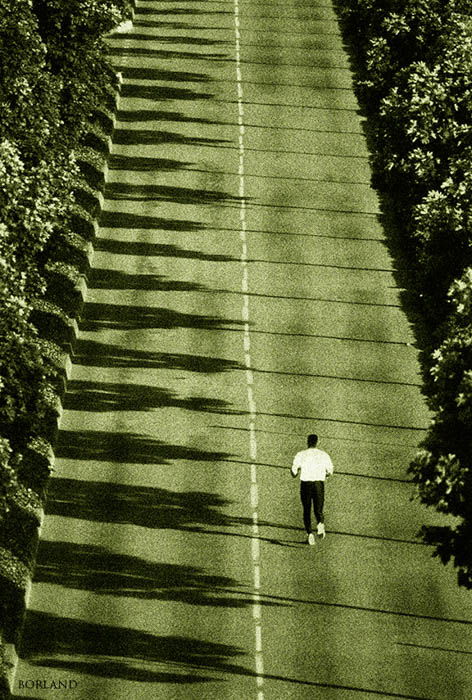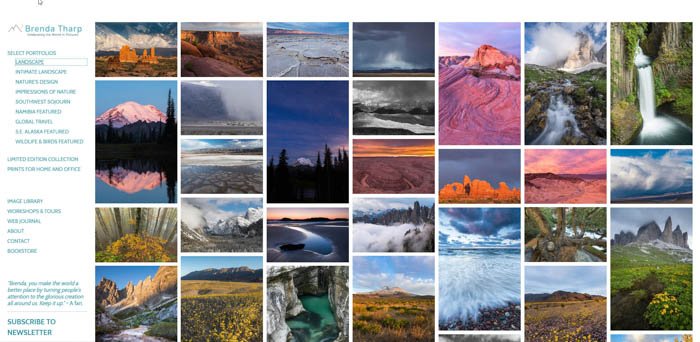Stock photography is the process of licensing photographs to multiple users, who then can use the images for a variety of purposes, including editorial, commercial, and advertising Many photographers find success in this field by building up a large portfolio of high-quality images and then marketing their work to stock photo agencies If you’re interested in getting started, here are a few tips to help you get started
What Is Selling Stock Photos?
Imagine someone on Facebook just contacted you. They want to buy one of your posted photos and they’re offering money. You agree to the sale, they send you the money by PayPal and you give them written permission to use your photo. You have just licensed one of your images as a stock photo. That, in a nutshell, is the stock photo business! It is the licensing of existing photographs by another party who will use it for a specific purpose. You create the photographs and make them available for purchase. Then a Buyer licenses them. Photographers successful in the business often plan and research what they will create. Simply photographing random “pretty pictures” you hope to sell is a shot in the dark. Those photographers earning the most income operate as a business. They carefully plan what, where, and how they shoot their subjects. They have researched markets and analyzed current trends. And they even use models, props, and authentic locations.
Where to Start
Chances are you are already photographing what you love. But is your favorite subject suitable for stock photography? You can look at stock photos as a product that must meet the needs of businesses. Your favourite subject must be crucial to a profitable enterprise. Start by asking yourself: What do I love to photograph? Who buys what I love to photograph? How will I sell my stock photography?
Shooting for Concepts
Creating Images that are in demand is a matter of research and planning. Stock photos that sell well are often successful because they illustrate a concept. A photo buyer’s goal is to find a stock image that meets a communication need. This is often around a specific concept. This photo illustrates various concepts from Winning to Competition, Leader, Ahead of the Pack, Race, Success, and more. There are hundreds if not thousands of concepts that buyers search for and here are a few examples:
Teamwork Family Happiness Pride Performance Quality Reliability Trust Work
Lab Technician: Take a moment and look at this photo to see what types of concepts you can come up with. They could be Research, Healthcare, Science, Prescription Drugs, and more. You can find effective examples of Concepts everywhere. Planning your shoot with concepts in mind will make your images more marketable. And don’t forget to obtain model and property releases from all persons and private property in your photographs. That will help you avoid a costly lawsuit. I should mention that the previous image of the lab tech. was photographed in my studio. I purchased all the lab glass, clothing, and used models to play the part. You too can do this in your garage!
Preparing to Shoot
Most subjects have a market somewhere and the challenge is to find them. If your passion is tropical birds, you probably already subscribe to publications or websites dedicated to them. You can and most likely will market to them. Technical perfection is also crucial for good selling images. This includes quality lighting, perfect exposure, pleasing compositions, and subjects that appear natural rather than posed. Additionally, bestselling stock photos are styled with the latest trends and technologies. This can be anything from the latest clothing trends to the latest smartphone.
What Should You Shoot?
If you are open to photographing a variety of subjects, keep in mind subject demand. Business and technology along with lifestyle subjects are often at the top of the list of bestseller. Nature and wildlife have lower demand. Just as important, photograph what you love to shoot! If you’re a landscape photographer and considering aviation photography because you heard there is more demand, get busy becoming a very good aviation photographer. Your competitors in that niche may have years of experience, large image files, and may even be pilots.
Lifestyle
Lifestyle images is a strong category. Ideas here might include couples walking on the beach, cooking together, or enjoying their children. Teenagers using technology, dating, hanging out with friends, or on college campuses are also good market areas. This birthday party sold very well…during its time! The concept of Family is great, but the clothing has been outdated for years and this photo will no longer sell. Because the concept is so strong, it would be worth photographing again with current styles. This scene was also created in the studio rather than a home. The larger studio provided more room for studio-quality lighting. Here is a good selling stock photograph due to the concepts: home buying and ownership. I asked friends to model, secured an empty home for half a day, and purchased empty boxes. Then I photographed them packing and unpacking boxes, and moving into the house. I also took this ‘celebration’ style photograph. It has been published in newspapers, advertisements, magazines, and more. There is great demand also for retired people living the good life. Your pictures should show them in active situations. Hiking, cruising, dining, sailing, tennis, and golf are some good examples. Anything related to financial security, healthy lifestyles, early retirement, has a consistent market.
Business and Industry
Don’t overlook Business and Industry subjects either. Technology changes daily and business images using the latest tech are in constant demand. People at work, business meetings, manufacturing processes, high-tech scenes, biomedical, and employees working together are also marketable subjects. When photographing industry, be sure to look at other angles like businesses going green, clean air and water, reforestation, pollution, global warming, solar technologies, wind power. These are all subjects currently in demand.
Outdoor Photography
For outdoor photographers, there are many markets to shoot for. There’s a magazine for just about every type of recreational sport and hobby. Manufacturers of outdoor products use outdoor images in their marketing and advertising efforts. Non-outdoor related businesses also use sports and recreation images. I once saw a poster produced by one of my hi-tech clients, of a rock climber and the catchphrase: Climbing to the top. Landscapes and nature is the most popular subject among photographers! But, when it comes to selling landscape stock photos, this category is challenging. It’s a very crowded niche and there is a glut of images in the markets. But photos are still used in magazines, books, calendars, and more. Marketable categories for stock photographers are limitless. Your strengths and interests should determine what you photograph.
Beyond the Capture
Successfully selling stock photos means a highly organized and efficiently run business. After the photo shoot, the digital files need to be edited and here you should be ruthless. While you can keep all your files in a Lightroom catalog, it’s important to pick only the best and market those. Keep a horizontal and vertical version, check for sharpness, and process the files for optimum quality. Then market only one version and when a client asks to see other versions, show them what you have. I will say it again, be ruthless in editing! There is an old saying in stock photography: ‘If in doubt, throw it out!’ Your image files also need to be organized. Some excellent programs designed to do this include Lightroom, Extensis Portfolio, Capture One, and ACD. Each of these programs offers something different. Your goal is to find an effective system for cataloging and tracking your images. Over time your photo libraries will grow. Tracking things like image data and sales information is essential. Should a client contact you about an image, you can provide all the information they might need.
Be an Illusionist
Many photographers use Photoshop. And this skill can broaden creative opportunities for stock photographers. Besides making RAW files ‘usable’, images that are impossible to photograph can now be created digitally. If you can imagine it, chances are you can create it in Photoshop. A good place to start creating an image is to generate an idea based on a concept you want to do. Once you’ve photographed the elements, you can digitally assemble them to create more marketable stock photography. This photograph demonstrates my point. I needed a global warming concept photo. I dug around my archives and found cracked mud from my Death Valley files, and a storm cloud from my Florida files. Then I composited them together, and added the lightning in Photoshop. I created this image as a concept photo about prescriptions, drug abuse, and similar. The bright, white background makes the pills and bottle translucent and the face is almost in silhouette.
Marketing and Selling Stock Photos
If you don’t have a client willing to pay to use your stock photos, they have no value. Getting your photography in front of buyers can be a daunting task. There are two ways you can go about doing it: joining a stock photo agency to sell your photos or selling them yourself. Many photographers do both to maximize their income. Stock photo agencies seek photographers who consistently produce outstanding imagery. The advantage of a stock photo agency is they handle everything from hosting to marketing, and the sale, but at a cost. The agents take a percentage of every sale and that percentage depends on the agency. Prior to contacting a photo agency, evaluate your library of unique stock photos. Agents are interested in what you’ve photographed in the past. But they are probably more interested in what you will photograph in the future. If you photograph what everybody else photographs in the same way, they might not need you. But if you are photographing subjects in a new and unique way, they may be more interested.
Self-Promotion
If you are selling your own photography, then you need a marketing plan to reach potential buyers. This is much easier when you market locally. Local photo buyers will consist of advertising agencies, graphic designers, book or magazine publishers, and web design firms. You can find them through the phone book or online directories. Finding addresses nationally is a bit more challenging due to the larger coverage with more cities and regions. In these cases, consider buying a list of potential clients from places like Agency Access. This way you can target your preferred clientele, like magazine publishers. Next, should you market by email or print? There are differing opinions as to which approach is best, but email is much cheaper than printing direct mail promotional pieces. The drawback to email is the Spam Folder. How many reach the client? How many unsubscribes will you get? For me, print has worked better due to the fact that my printed piece will arrive at their office. That increases the likelihood that it will land on the client’s desk. The disadvantage is higher costs! Here is one print promotion I ran for my stock photography. I had these professionally designed and printed showing my client list and the actual library numbers. The client could go to my website and see my photos online, search the number for the image, and buy it. I then mailed 1,000 of them to my preferred client list. This resulted in two stock photo sales (of other images) and one large outdoor product photography assignment.
Create Your Own Mini Agency
You can also market and sell your own imagery. Before pursuing this route, there are some things to consider. While a stock photo agent handles all the work, creating your own site means you do all the work. This might include:
Building the website Prepping all the digital image files (processing, captions, keywords) Finding the buyers Marketing the site to buyers Negotiating the sales Monitoring the sales channels every day
You can build a full e-commerce photo website to handle stock photo sales without you being there. Companies such as Ktools and Stockphotobox create software that allows you to easily set up stock photography websites for convenient purchases and download. If you do not want to build your own site, look at Photoshelter. It’s similar to a photo agency but is also a hosting site for photographers to sell their images. Everything you need in a site is there. You upload your photos, add captions, keywords, set your pricing, then market to your clients. These photography sites will handle all transactions for you. This is my friend Brenda Tharp’s Photoshelter site where she offers her landscape and travel photography for licensing.
Pricing and Licenses
One of the biggest challenges in selling stock photos is establishing a price, but it does not need to be. While there are many licensing models currently in use, I will simplify it here with these three models:
RM-Rights Managed. When you license a photo as an RM image, you are licensing the photo for a specific usage, like the cover of a brochure, for one-time use. If the client later wants to use the image again, they pay again. RF-Royalty Free. This licensing model allows the buyer to use the photo any way they wish and forever without paying for additional uses. Microstock. This model licenses images at the low end and in some case below one dollar per image, and like RF, clients can use the images forever.
The model you choose can be set or flexible when you negotiate with the client. It is certainly well worth hearing them out on their needs, usages, and time frame, and then quoting a price. If you need assistance with pricing, visit major photo agency websites. You can look at their pricing calculator to determine a licensing fee. Check our guide on setting wedding photography or real estate photography pricing for more tips. We have a great review on selling images on foap to check out too!
Ready, Set, Go
Selling stock photos is a business wide open for new talent. With focus and planning, you can create images that earn you some, or even all of your income as a photographer.












